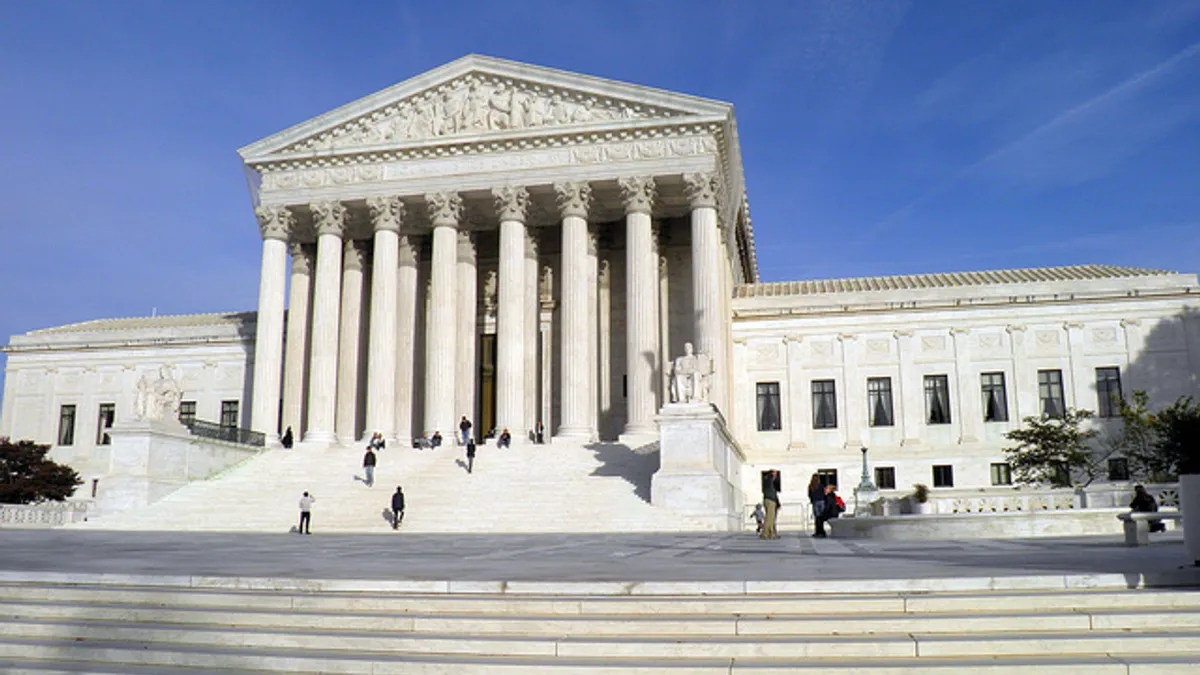Dive Brief:
- The U.S. Supreme Court appeared divided over arguments in a case that could determine the Environmental Protection Agency's (EPA) ability to issue permits for greenhouse gas emissions.
- At issue is whether EPA can tailor its permitting so that it targets only large carbon sources that emit at least 100,000 tons of carbon a year, like new power plants. Industry groups and others argue that EPA's “tailoring rule” is illegal.
- A decision is expected by July.
Dive Insight:
The Supreme Court ruled in 2007 that greenhouse gases are a “pollutant” under the Clean Air Act, giving EPA authority to regulate them. That ruling is not at issue. Also, EPA's plans for greenhouse gas standards for new and existing plants are not threatened by the court review. Instead, it is a narrower question about permitting that focuses on EPA's requirement that new power plants get permits for their greenhouse gas emissions.
This case combines various challenges to EPA's greenhouse gas authority. In 2012, the U.S. Court of Appeals for the D.C. Circuit rejected those challenges.














